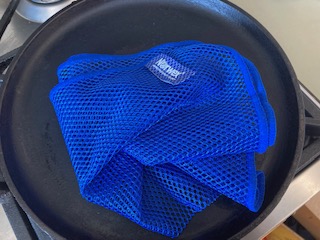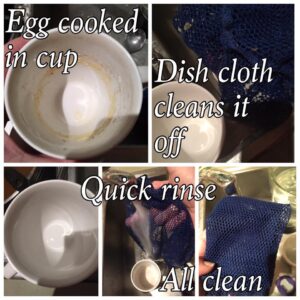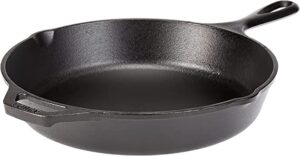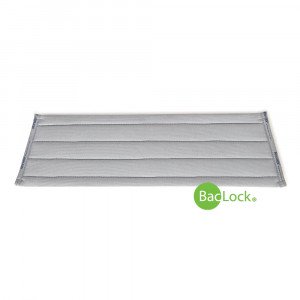Last updated on September 14th, 2025 at 09:29 pm
I love my cast iron cookware. It has been a staple in kitchens for centuries, because it not only stands the test of time, but also provides great heat distribution and retention, making it the ideal choice for searing and frying, as well as for slow cooking. It can also develop a shiny patina that makes it almost as non-stick as non-stick (but without the nasty chemicals!)
However, cleaning cast iron can be a bit tricky. Traditional cleaning methods can strip away the seasoning layer, which is what gives cast iron its non-stick qualities. The use of metal scrubbers can also damage the skillet’s surface and may lead to rusting. To get the most out of your cast iron cookware, you need to clean it properly and with the right materials.
If you are looking for an effective, yet gentle way to clean your cast iron cookware, a Norwex dishcloth is the perfect solution. The dishcloth is a special type of cloth made of knitted nylon net. It’s designed to be tough enough to remove grease and grime, yet gentle enough to not damage the underlying finish. It is also completely non-abrasive, which means it won’t scratch the surface of your pan.

To use the dishcloth to clean your cast iron, if it’s pretty grimey, you can start by heating up the pan with a little water in it. This will help to loosen up any grease or grime that is stuck to the surface. Once the pan is hot, remove it from the heat and allow it to cool for a few minutes (you don’t want to burn yourself OR melt your cloth!).
Next, wet the dishcloth itself. You may wish add bit of mild dishwashing detergent if it is especially greasy. Most often I don’t find it necessary though. Gently scrub the pan in a circular motion, focusing on any tough spots. As you scrub, use a bit of elbow grease to really get into the nooks and crannies if need be. The dishcloth won’t scratch or remove the patina. Be sure to rinse off the cloth regularly to remove any food or residue that may be stuck to it.
Once you’ve finished scrubbing the pan, rinse it off with hot water and then dry it with a clean cloth. This will help to prevent any water spots or rusting.
Never use harsh chemicals, steel wool, or scouring pads on your cast iron skillet. These can remove the seasoning layer and damage the surface of the pan. It’s also important to never leave cast iron submerged in water or put it in the dishwasher.
Once you’ve finished cleaning your cast iron skillet, you’ll want to re-season it, at least occasionally. This will help to protect the surface and ensure your cookware lasts longer. Most times I just wipe a very small amount of olive oil into the surface, because that’s what I always have on hand.
But occasionally you’ll want to do it properly. To do this, first make sure it’s bone dry, by heating it in the oven or on the stove, rather than just drying it off with a cloth.
Start by rubbing a light coat of oil onto the pan. Now wipe off any excess. You don’t want uneven drips. The best choice is flaxseed oil (the food grade version of linseed oil). Then, place the pan in a preheated oven at 250 degrees Celcius for one hour. Once the pan is cool, wipe off any excess oil and it will be ready to use.

Cleaning cast iron cookware (and anything else that needs a bit of scrubbing) is easy with your netted dishcloth, and an effective tool to keep your pan in top condition. Not only is it gentle on the surface, but it also removes grease and grime quickly and effectively.
Plus, it’s reusable and easy to clean. Unlike the cast iron, you can even put your dishcloth in the dishwasher! So if you’re looking for a way to effectively and safely clean your cast iron cookware, a Norwex dishcloth is the perfect choice. (More ways to use the dishcloth here).




